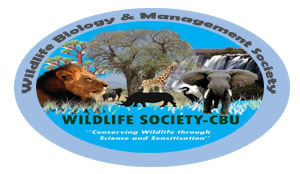What is soil? The majority of people but for famers would describe soil as dirt but soil is simply a product of climate and living organism acting upon parent material as influenced by topography over a period of time.
The definition is only but derived from soil forming factors that is parent material, climate, vegetation, topography and time.
Parent material refers to the original material from which soil is formed it maybe organic material like plant and animal remains or mineral material such as partially weathered rocks, sediments moved and deposited by wind and water. Parent material is responsible for the soil’s colour, texture and structure.
Climate determines the kind of animal and plant material that thrive in and on the soil and the amount of water available for weathering minerals and transportation of sediments, climate also affects the rate at which the soil is formed.
For instance in hot and wet climates soil formation is faster compared to dry and cold climates were its significantly slow Vegetation that is flora matter provide organic matter such as leaves and twigs that fall onto the soil and are decomposed or broken down by fungi and bacteria microbes of the soil, likewise earthworms also participate in the break down of these plant remains.
Microbes and earthworms are responsible for the formation of humus which is dark in colour.
Topography this is the nature of the landscape, the nature of the landscape determines how a soil is formed take for instance the nature of the land is that of a slope with different elevation, this results in different soil formation due to different moisture and temperature changes as runoff water moves from uphill carrying with it sediments that are deposited downhill this results in one part of the landscape having more moisture and deposition than the other.
The time it takes for climate and vegetation to act on parent material and topography over an extended period of time is dependent on the intensity of the other soil factors. Young soils have properties that resemble that of their parent material while older soils deviate from the nature of parent material owing to soil use and weathering activities.
Soil conservation is a set of management strategies for prevention of soil decline in its biological or economical productivity by ensuring that the soil eroded and being utilised is not chemically altered by overuse, acidification and other soil contamination
Causes of soil pollution come from a wide array of sources but many of these pollutants are heavy metals that contaminate the soils. But for Kabwe, agricultural lands and mining areas most of Zambia’s soil are not polluted. It is for this reason that our soils must be maintained so that they do not become polluted especially those lands under heavy commercial agriculture as they are subject to overuse, use of chemical fertilisers and pesticides that end up in soils that cause catastrophic results.
Mining operations causes the surrounding soil to become contaminated with large amounts of heavy metals were as theseheavy metals occur naturally, nonetheless these heavy metals rarely occur at the toxic levels seen around mining areas.
Sewage system are also the causes of land pollution. Although sewage system are a modern day necessity that work to keep the landscape free of sewer contamination, occasionally sewage overflows or leakages of raw untreated human waste get deposited into the soil and ground water. Raw sewage holds many contaminates but the most biggest threat to humans is menagerie of dangerous pathogens, which include E.coli and hepatitis that cause water born diseases such as cholera.
There a number of ways to conserve soils like Roosevelt said “A country that destroys its soils destroys itself”. This hold true since healthy soils provides the people with growing of food they need and soil is the only known material that can support the growth of plants.
Thus it is imperative that as a nation, we conserve our soil by ensuring that commercial famers use sustainable methods of agriculture through the use of easily biodegradable pesticides and the use of organic fertilisers in place of chemical fertilizers that are currently be exploited by our famers.
Mining fames must ensure that deposition of mining waste is done correctly by fully extracting heavy metals from their waste materials before disposal to prevent land contamination by heavy metals.
Sewage treatment must be carefully done ensuring that there is minimal leakage of raw sewage into open environment and were its leaked proper measures must be put in place in order to neutralise the contamination through the addition of algae that turns sewage to harmless matter that can degrade safely
With these land conservation practices put in place and practice of sustainable agriculture and mining, Zambia’s soils will continual to provide its people with food and see to it that future generations also enjoy these healthy soils.
Let us guard jealously our land and natural resources, do not treat soil as dirt and remember we only have but one Zambia.
Share with us your experiences, comments and recommendations. Send emails to wildlifemgtsociety@gmail.com ORsinkondeenos@gmail.com







